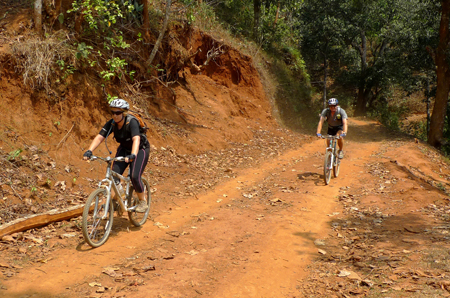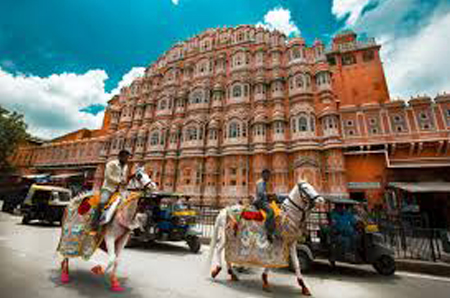
-
Total Duration:12 Days
-
Trip Grade: Easy
-
Max Elevation:571
-
Best Time:Whole Year
You will experience the best of North India tours with the Golden Triangle. Delhi – a canvas that reflects the complexities, contradictions, beauty and dynamism of a city where the past co-exist with the present. Jaipur- where there is a feast in store for tourists. Attractive monuments where one can breathe the fragrance of history. Jaipur, the pink city, is itself a treat for its visitors, royalty comes out from every hook and corner of the city. Magnificent forts, luxurious hotels and excursions of adjacent places of interest make the city a paradise for tourists.
Agra, famous for the Taj Mahal, this city is also home to other two heritage monuments – Fatehpur Sikri and Red Fort. It is more just a immoral city of graveyards and work. Other destinations of North India which have cultural importance are additionally covered in this Golden triangle tour. Khajuraho: a world heritage site famous for its temples dedicated to Lord Shiva, Vishnu and Jain patriarchs. Both internally and externally the temples are richly carved with excellent sculptures that are frequently sensual and, at times, sexually explicit; and Varanasi: Varanasi – the land where experience and discovery reach the ultimate bliss.Varanasi, the holy city of India, is also known by the name of Kashi and Benaras. Kashi, the city of Moksha for Hindus since centuries, is known for its fine-quality silks, ‘paan’ and Benares Hindu University and Avimukta of the ancient days, Varanasi is the most popular pilgrimage point for the Hindus. One of the seven holiest cities, Varanasi city is also one the Shakti Peethas and one of the twelve Jyotir Linga sites in India. In Hinduism it is believed that those who die and are cremated here get an instant gateway to liberation from the cycle of births and re-births.
Considered as the abode of Lord Shiva, Varanasi is situated on the banks of River Ganges, which is believed to have the power of washing away all of one’s sins. As pundits here will tell you, whatever is sacrificed and chanted here or given in charity reaps its fruits thousand times more than those good deeds performed at other places because of the power of that place. It is believed that three nights of fasting in Varanasi city can reap you rewards of many thousands of lifetimes of asceticism!Varanasi is the oldest city of the world. Varanasi is more than 3000 years old and is famous as the city of temples. In Varanasi, there are temples at every few paces. Looking at the number of temples in Varanasi, it is hard to believe that a large number of them were demolished during the medieval times. Jyotirlinga Visvanatha Temple or Golden Temple, rebuilt in 1776, is dedicated to Lord Shiva. The Jnana Vapi well (meaning ‘Well of Wisdom) is believed to have been dug by Lord Shiva himself. It is believed that the majestic Alamgir mosque has replaced one of the most ancient shrines known as the temple of Bindu Madhava. The thirty-three hundred million shrines fill one with awe and wonder with sheer numbers.
The Ganga Ghats (river front) are the most popular pilgrimage spot of Varanasi and are centers of music and learning. There is a great tradition of Yatras in the holy city of Kashi and the most sacred path is that of Panchkoshi Parikrama, the fifty-mile path with a radius of five miles that cover 108 shrines along the way, with Panchakoshi Temple as its main shrine. Other popular pilgrimage route is Nagara Pradakshina, which covers seventy-two shrines along the way. Since time immemorial Varanasi is a great center of learning. The holy city has been a symbol of spiritualism, philosophy and mysticism for thousands of years and has produced great saints and personalities like Guatama Buddha, Mahavira, Kabir, Tulsi Das, Shankaracharaya, Ramanuja and Patanjali.
















